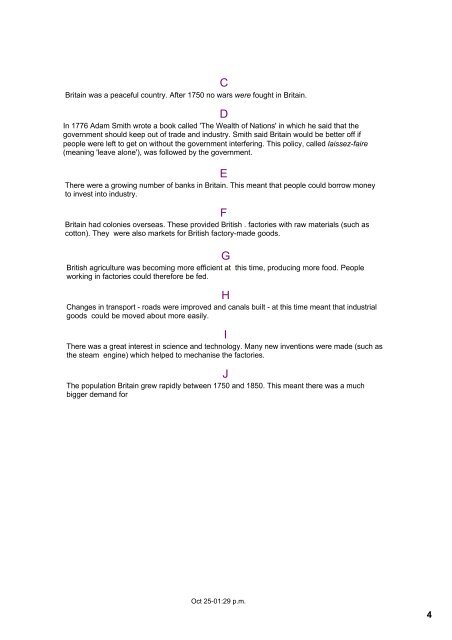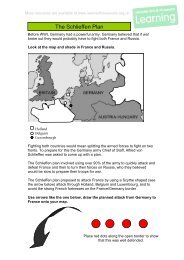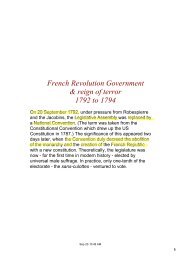Industrial Revolution Causes.pdf - Cambridge College Secondary ...
Industrial Revolution Causes.pdf - Cambridge College Secondary ...
Industrial Revolution Causes.pdf - Cambridge College Secondary ...
Create successful ePaper yourself
Turn your PDF publications into a flip-book with our unique Google optimized e-Paper software.
C<br />
Britain was a peaceful country. After 1750 no wars were fought in Britain.<br />
D<br />
In 1776 Adam Smith wrote a book called 'The Wealth of Nations' in which he said that the<br />
government should keep out of trade and industry. Smith said Britain would be better off if<br />
people were left to get on without the government interfering. This policy, called laissezfaire<br />
(meaning 'leave alone'), was followed by the government.<br />
E<br />
There were a growing number of banks in Britain. This meant that people could borrow money<br />
to invest into industry.<br />
F<br />
Britain had colonies overseas. These provided British . factories with raw materials (such as<br />
cotton). They were also markets for British factorymade goods.<br />
G<br />
British agriculture was becoming more efficient at this time, producing more food. People<br />
working in factories could therefore be fed.<br />
H<br />
Changes in transport roads were improved and canals built at this time meant that industrial<br />
goods could be moved about more easily.<br />
I<br />
There was a great interest in science and technology. Many new inventions were made (such as<br />
the steam engine) which helped to mechanise the factories.<br />
J<br />
The population Britain grew rapidly between 1750 and 1850. This meant there was a much<br />
bigger demand for<br />
Oct 2501:29 p.m.<br />
4






